Badminton Shuttlecock Flight CFD Simulation, Training
Free
In this project, the airflow around a badminton shuttlecock has been investigated.
Click on Add To Cart and obtain the Geometry file, Mesh file, and a Comprehensive ANSYS Fluent Training Video.To Order Your Project or benefit from a CFD consultation, contact our experts via email ([email protected]), online support tab, or WhatsApp at +44 7443 197273.
There are some Free Products to check our service quality.
If you want the training video in another language instead of English, ask it via [email protected] after you buy the product.
Description
Badminton Shuttlecock Flight CFD Simulation, ANSYS Fluent Training
The study of the motion of objects in air or other fluids has always been of interest. Due to science’s progress in the simulation of such phenomena, engineers have ever tried to do the best possible design in this field. Many of the changes in the appearance of such objects that move in the fluid have been due to this issue. There are many examples in this field that have caused significant changes. The fuselage of aircraft, the type of fins, and their appearance, the shape of the fuselage of cars, the fuselage of ships and submarines, etc., are a few examples of regard.
The importance of this issue is that even the appearance of far fewer virtual objects has been affected. Changes in the formation of the body of the golf ball are one of these cases. The ball used in badminton is no exception and has undergone many changes resulting from such studies.
Project Description
In this project, the airflow around a badminton shuttlecock has been investigated by ANSYS Fluent software. The airflow enters the computational domain with a velocity of 94 m/s and passes on the ball. A Realizable k-epsilon model with standard wall functions is exploited to solve turbulent flow equations.
Badminton Shuttlecock Geometry & Mesh
The geometry of this project is designed in ANSYS design modeler and meshed in ANSYS meshing. The mesh type used for this geometry is unstructured, and the element number is 1935891.
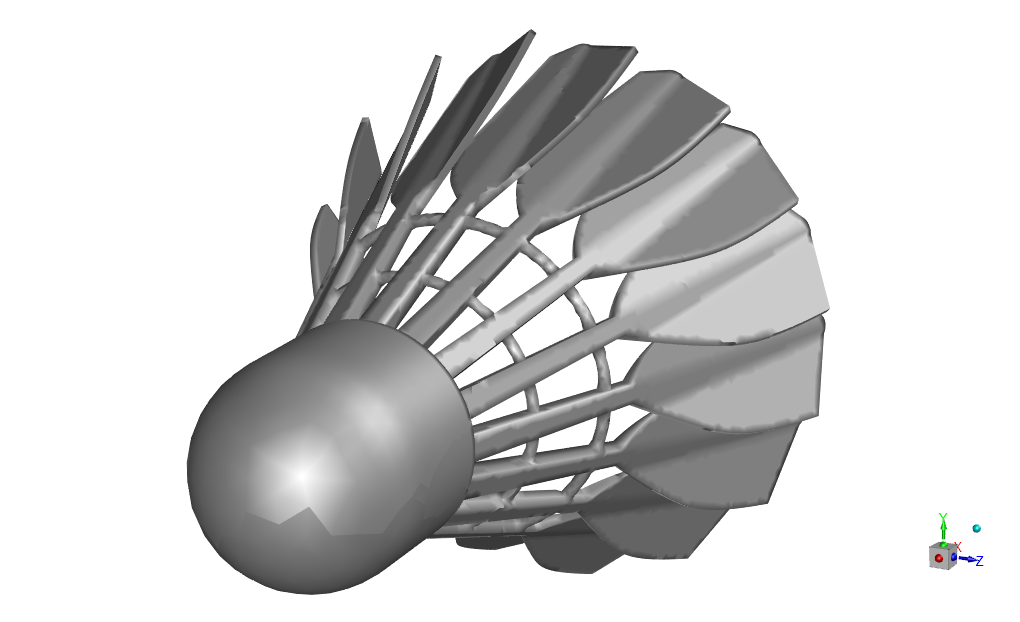
Badminton Shuttlecock Flight CFD Simulation Settings
The key assumptions considered in this project are:
- Simulation is done using a pressure-based solver.
- The present simulation and its results are considered to be steady and do not change as a function of time.
- The effect of gravity has not been taken into account.
The applied settings are summarized in the following table.
| Models | ||
| Viscous model | k-epsilon | |
| k-epsilon model | realizable | |
| near wall treatment | standard wall function | |
| Energy | on | |
| Boundary conditions | ||
| Inlet | Velocity inlet | |
| Inlet | 94 m/s | |
| Outlet | Pressure outlet | |
| Gauge pressure | 0 Pa | |
| Walls | Stationary wall | |
| Solution Methods | ||
| Pressure-velocity coupling | coupled | |
| Spatial discretization | Pressure | Second order |
| Momentum | second-order upwind | |
| turbulent kinetic energy | first-order upwind | |
| turbulent dissipation rate | first order upwind | |
| Initialization | ||
| Initialization method | Standard | |
| gauge pressure | 0 Pa | |
| Velocity (x,y,z) | (94,0,0) m/s | |
| Turbulent kinetic energy | 33.135 m2/s2 | |
| Turbulent dissipation rate | 676464.7 m2/s3 | |
Results
Contours of pressure velocity, temperature, etc. are obtained and presented.
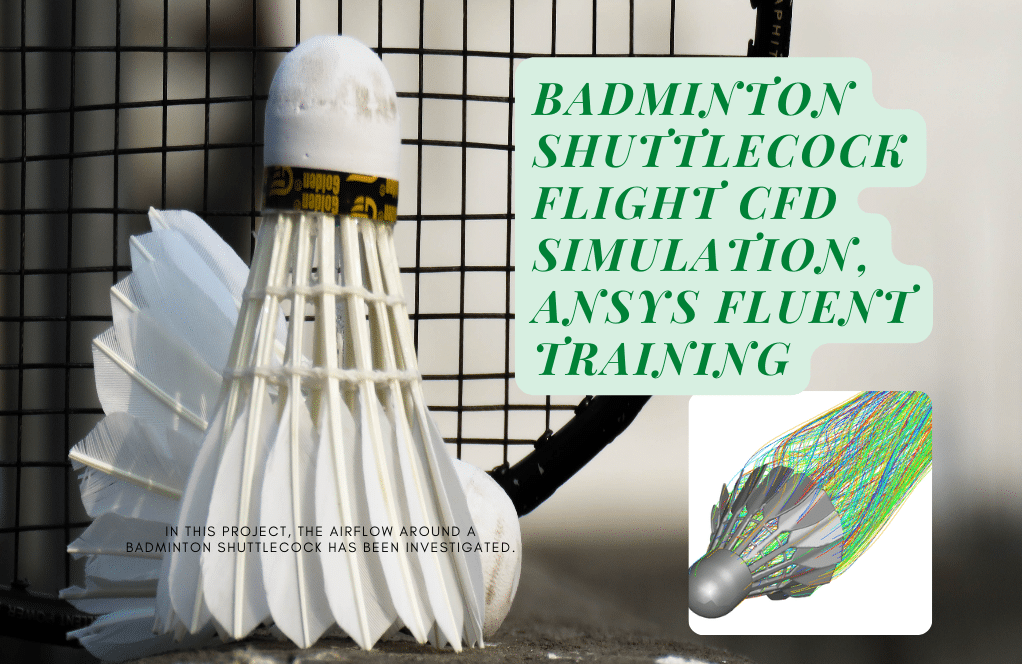
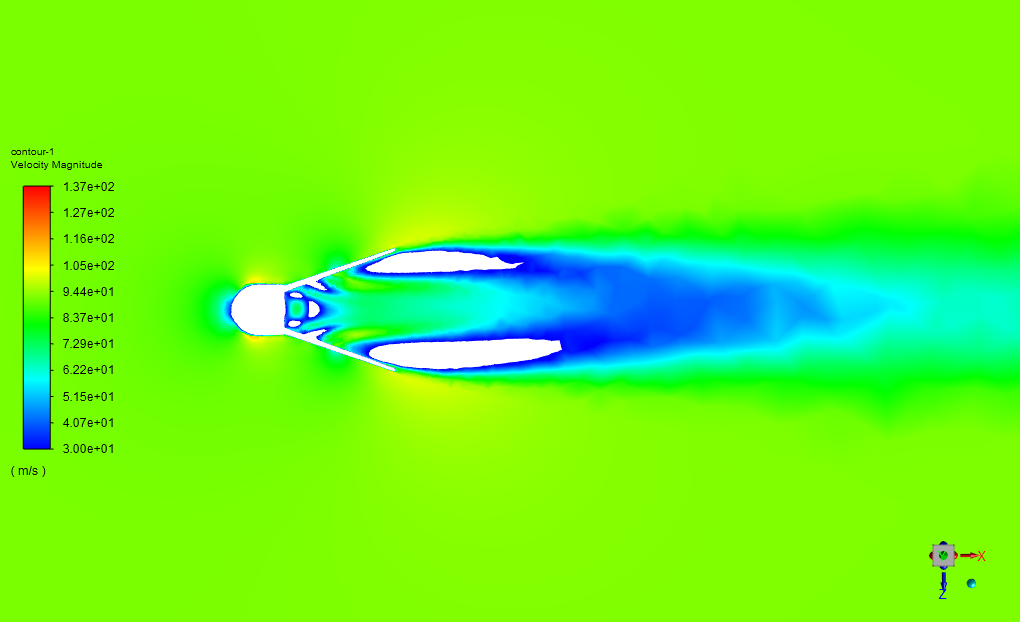
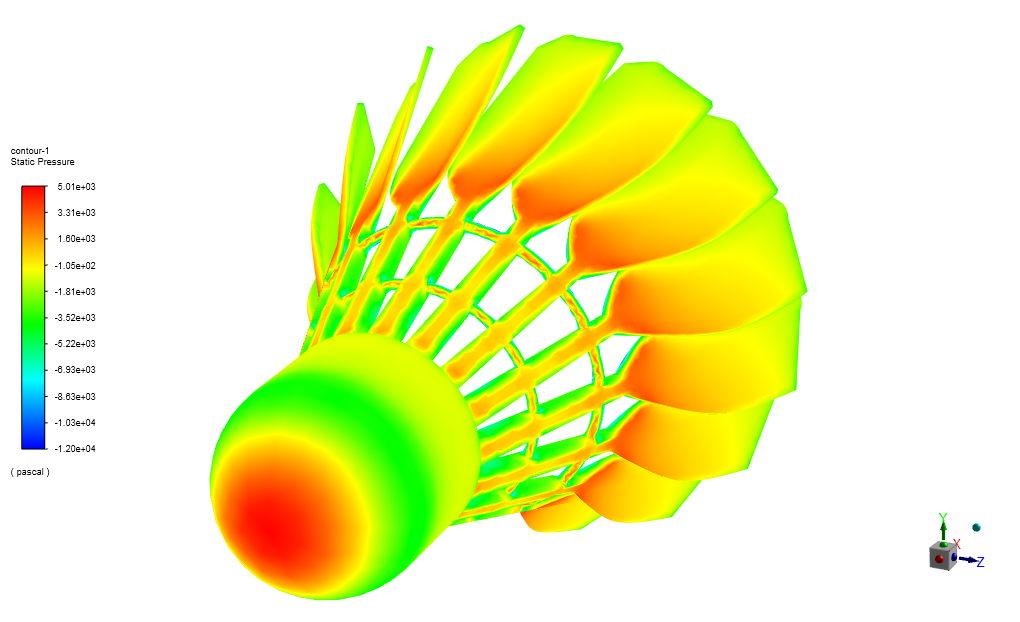
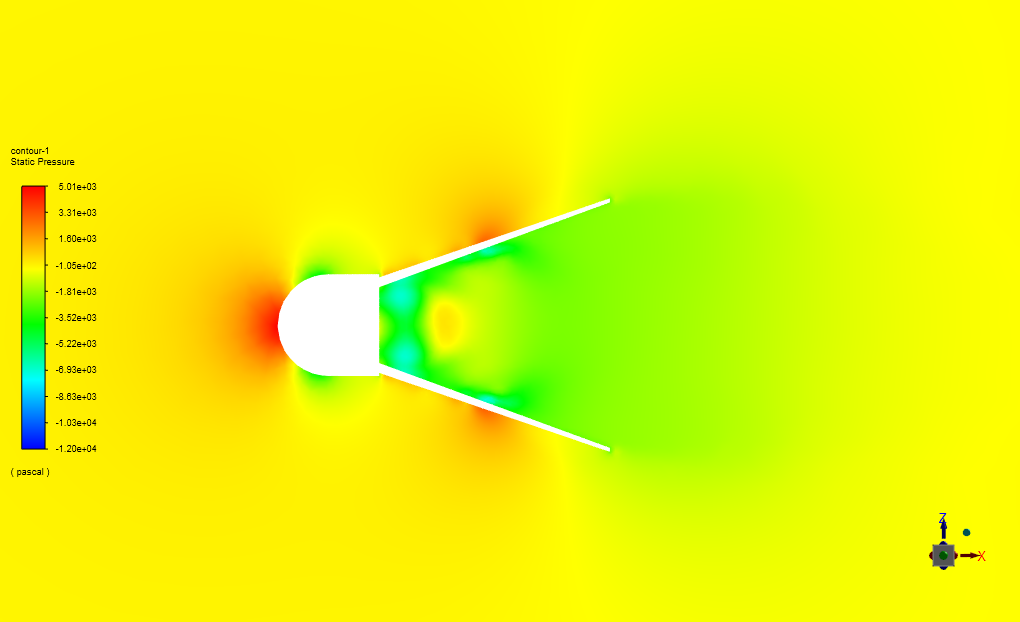
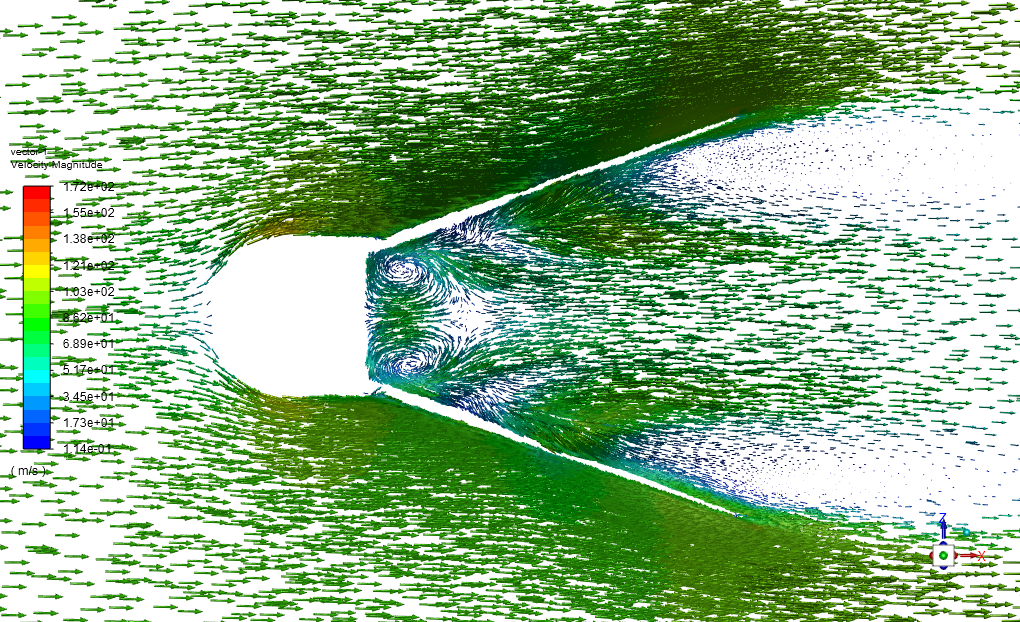
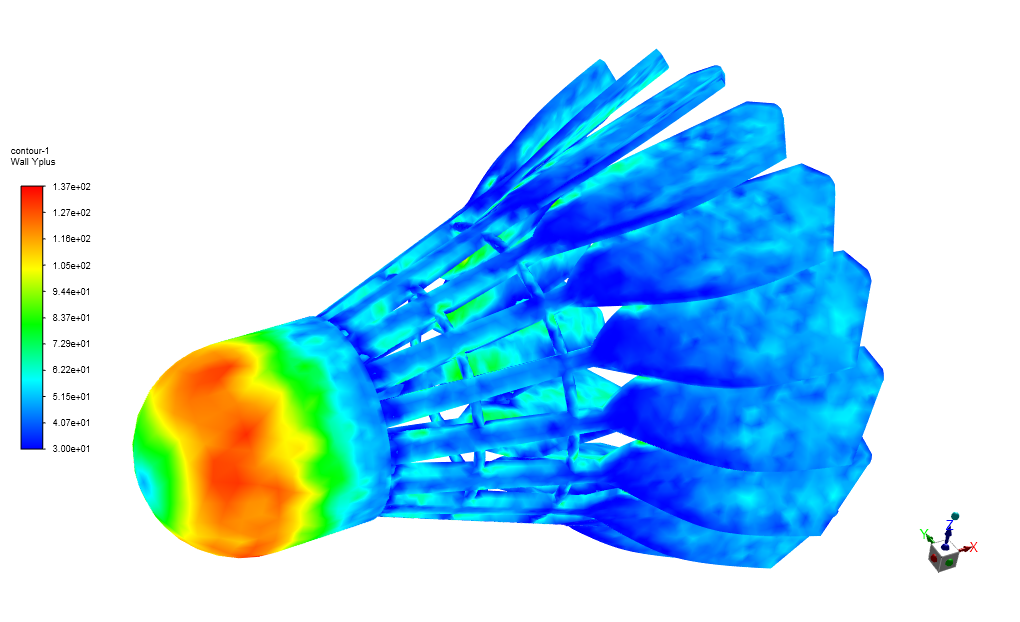
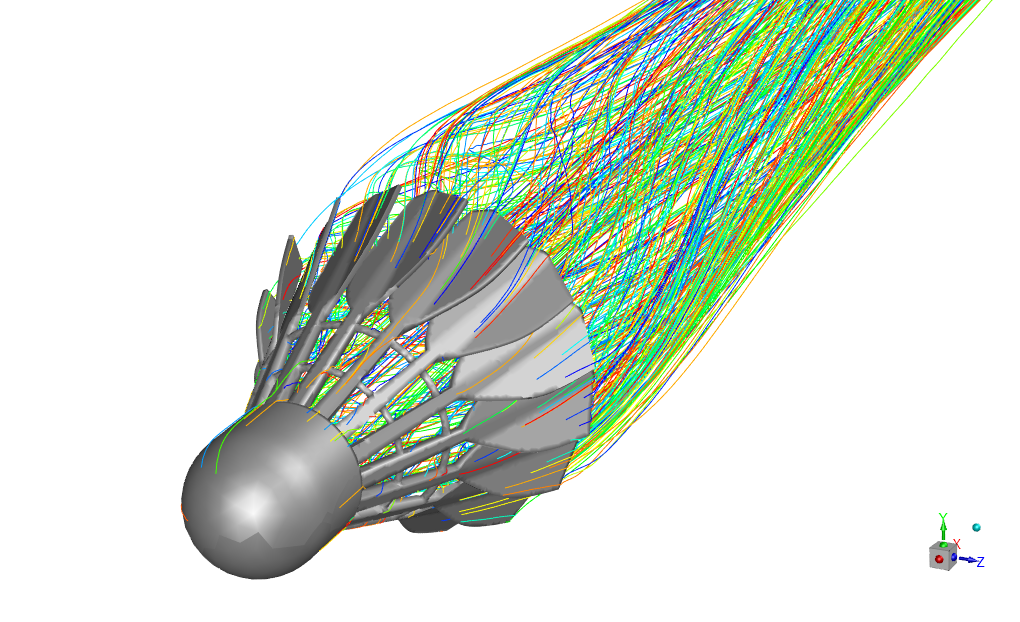
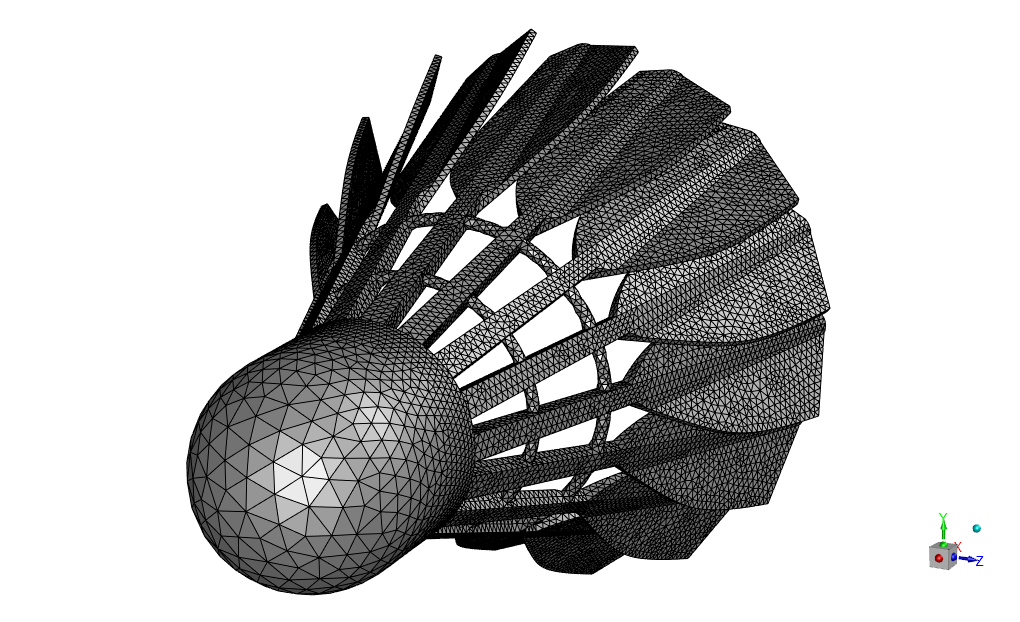
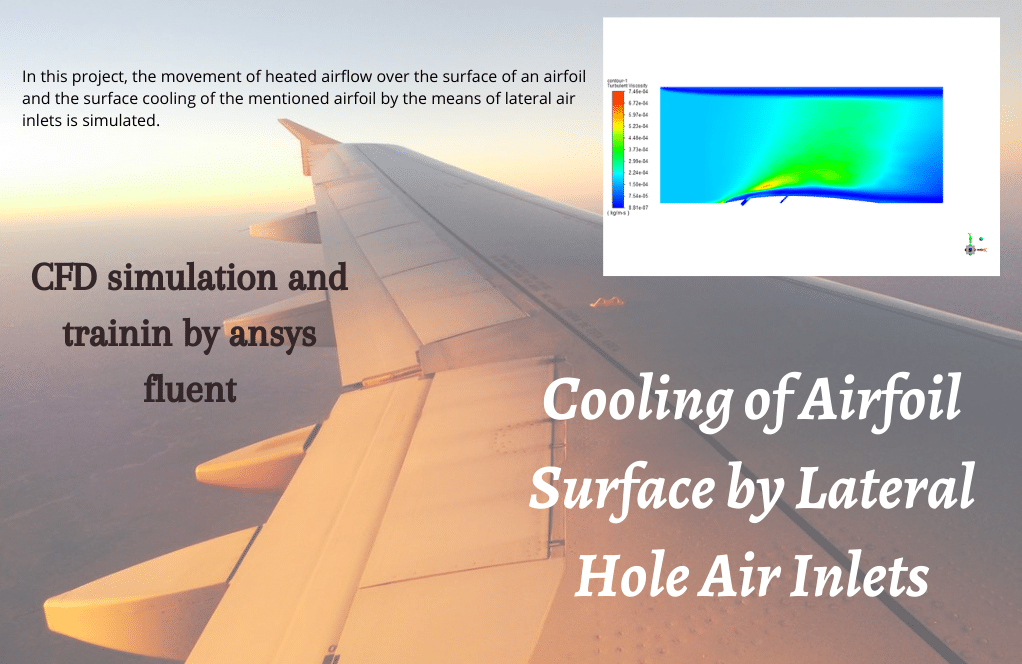

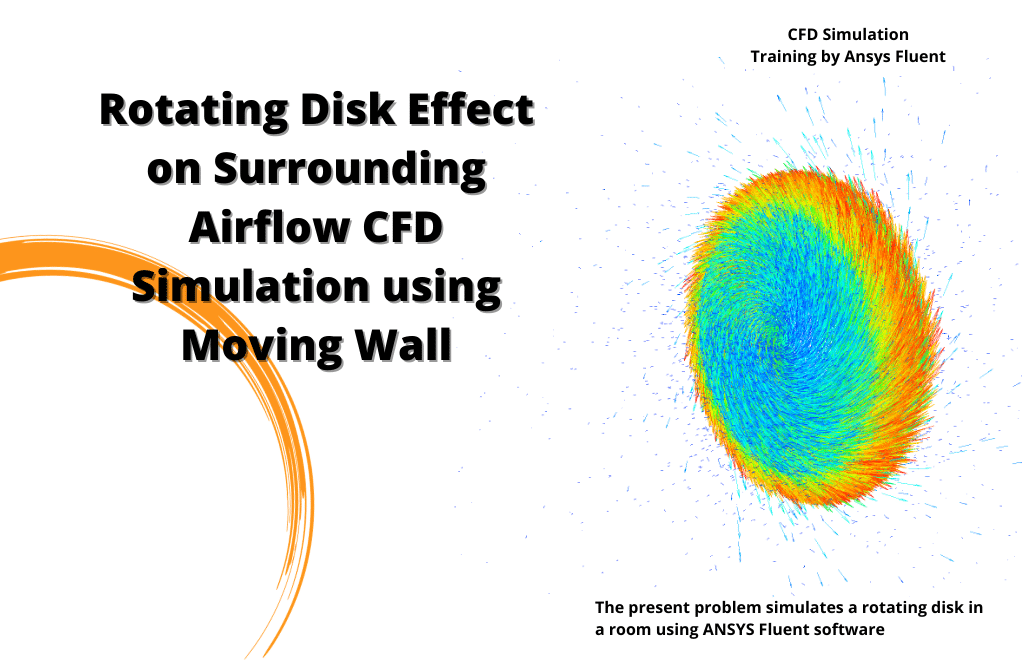
Melba West –
I’m very impressed by the level of detail in the badminton shuttlecock simulation, it’s fascinating how computational fluid dynamics can alter the design and aerodynamics of sports equipment. Your training module clearly demonstrates expertise in using ANSYS for practical applications.
MR CFD Support –
Thank you for the positive feedback on our badminton shuttlecock flight CFD simulation training! We are delighted to see that the detail and application of computational fluid dynamics in sports has caught your attention. We continuously aim to provide high-quality training that can be practically applied in various fields including sports aerodynamics. Your appreciation motivates us to keep delivering exceptional learning experiences.
Edyth Howe –
The Realizable k-epsilon model has been used for turbulent flow, but could you please elaborate on how this model differs from other turbulence models and why it was chosen for the shuttlecock simulation?
MR CFD Support –
The Realizable k-epsilon model is known for its robustness and ability to provide accurate results for a wide range of turbulent flows. It includes improvements over the standard k-epsilon model with enhanced mathematical constraints on the Reynolds stresses. This results in better prediction of the spreading rate of both planar and round jets. For the simulation of the badminton shuttlecock in air, accuracy in the prediction of turbulent wake and complex flow elements is crucial. The Realizable k-epsilon model was chosen exactly for its improved accuracy in such scenarios. It is particularly effective in flows with strong curvature, vortices, and jets, which are characteristics present in the airflow around a shuttlecock during flight.
Lauren Ebert –
The shuttlecock simulation project does an excellent job of detailing the process of airflow analysis using ANSYS Fluent. Your standards for meshing and detailed explanation of the solver settings are particularly helpful. The application of the steady-state assumption and discounting gravity’s effect seem suitable for analyzing the performance of shuttlecock in high-speed conditions. It’s also wonderful to see how your utilization of the k-epsilon model and the chosen wall function affect the accuracy of the simulation results.
MR CFD Support –
Thank you for your thoughtful review and appreciation of our Badminton Shuttlecock Flight CFD Simulation training product. We are delighted to know that the information provided was beneficial for understanding the simulation process. Your feedback is important to us, and we’re glad we could accommodate your learning needs.
Ryley Deckow –
The explanation of the simulation is very clear and detailed. I appreciate the use of high-velocity airflow to understand the shuttlecock’s aerodynamics. It also highlights the benefit of iterative changes leading to optimized designs in sport equipment.
MR CFD Support –
Thank you for your positive feedback! We’re glad to hear you found the details of the Badminton Shuttlecock Flight CFD Simulation clear and informative. It’s always our goal to provide comprehensive training that enables a deeper understanding of complex phenomena. If you have any further questions or need assistance with your own simulations, don’t hesitate to reach out.
Annette Rau –
The training material seems comprehensive. Can it be considered suitable for beginners, or does it require previous experience with similar CFD simulations?
MR CFD Support –
This training material is designed with detailed simulation settings and stepped processes, making it accessible for learners with basic CFD understanding. However, newcomers to ANSYS Fluent might benefit from foundational knowledge of CFD principles and familiarity with the software interface.
Estella Hammes –
This CFD training was a revelation! The insights on shuttlecock aerodynamics are a game-changer for any badminton enthusiast or engineer. The way the simulation captures the intricate airflow and its impact on flight is truly impressive.
MR CFD Support –
Thank you for your kind words! We’re thrilled to hear that our Badminton Shuttlecock Flight CFD Simulation training provided meaningful insights and added value to your understanding of shuttlecock aerodynamics. Your appreciation motivates us to keep providing high-quality learning experiences. If you have any more feedback or need further learning materials, feel free to reach out!
Miss Effie Romaguera –
The training material seems very detailed. I was wondering, with the airflow set at 94 m/s, what are the expected effects on the shuttlecock’s trajectory? Does the training give insight on that?
MR CFD Support –
Our training material includes a comprehensive analysis of the airflow around the shuttlecock, which at a speed of 94 m/s can significantly affect its trajectory due to aerodynamic forces. The simulation results provide insights on pressure and velocity fields, which help in understanding how the shuttlecock’s path is altered by these high-speed conditions.
Dr. Elvis Hirthe II –
The CFD training material seems comprehensive. I enjoyed how the simulation includes detailed setups like the realizable k-epsilon turbulence model. However, how does excluding the gravitational effects impact the accuracy of the badminton shuttlecock’s behavior during its flight?
MR CFD Support –
The exclusion of gravitational effects in the badminton shuttlecock CFD simulation simplifies the problem, making it less computationally demanding. Nevertheless, in real life especially for such a light object as the shuttlecock, gravity plays a crucial role in determining its flight characteristics. By not including gravity in the simulation, we would not be capturing its natural arcing trajectory and the rate at which it would decelerate and fall. This could be significant in the design and response analysis phase, as modifications based on gravity-inclusive data might produce different results.
Prof. Travis Mertz –
The Realizable k-epsilon model with standard wall functions was used in this simulation. Can you explain why this was chosen over other turbulence models?
MR CFD Support –
The Realizable k-epsilon model along with standard wall functions was selected for simulating the turbulent flow around the badminton shuttlecock due to its capability to more accurately predict the flow pattern around bluff bodies. This model adjusts the transport equation for turbulent viscosity to account for the realizable physical constraints on the normal stresses which often results in better performance for flows like those over the highly curved surfaces of a shuttlecock. Furthermore, the standard wall functions are capable of providing a reasonable balance between accuracy and computational expense when dealing with flows that involve boundary layers which are essential when analyzing the aerodynamic properties of objects such as a shuttlecock.
Arely Watsica –
The training provides an excellent foundation for understanding the complex airflow dynamics around a badminton shuttlecock. The realizable k-epsilon turbulence model seems particularly effective for capturing the intricacies of turbulent flow in this scenario. Well done on the unstructured mesh as well; it appears to offer the necessary refinement without becoming computationally prohibitive. Looking forward to more insightful simulations!
MR CFD Support –
Thank you for the positive feedback! We’re glad to hear that the shuttlecock flight CFD simulation training met your expectations and provided you with a clear understanding of the air dynamics involved. We strive to ensure that our simulations are both informative and manageable in terms of computational demands. Stay tuned for more exciting and informative simulations in the future!
Kyleigh Collins –
The course content is well-structured, and I’ve gained a wealth of knowledge in CFD simulation of airflow around a badminton shuttlecock in ANSYS Fluent. The step-by-step guidance through the setup and execution of the simulation has been incredibly helpful.
MR CFD Support –
Thank you for your positive feedback! We’re thrilled to hear that our Badminton Shuttlecock Flight CFD Simulation Training was helpful and informative. We strive to provide comprehensive and easy-to-understand material that empowers our customers to confidently apply CFD analysis to complex simulations. Your success is our goal!
Julianne Windler –
The Realizable k-epsilon model was used in the shuttlecock simulation. How does this model help in accurately predicting the shuttlecock’s flight, and are elements like spin considered in the simulation?
MR CFD Support –
The Realizable k-epsilon model adds improvements to the turbulence model, enhancing the accuracy for flows with strong swirls or separation. It provides reliable results for the aerodynamic performance of the shuttlecock. In this simulation, the study focuses on the steady state airflow effect on the shuttlecock, offering insights into pressure and velocity distribution. Spin factors are typically part of a more complex simulation involving transient analysis, which might not be considered in this particular study.